Today was another overcast day and the clouds threatened rain long before we woke up. We didn’t let that bother us, though: We were really looking forward to today’s Romantic Road excursion.
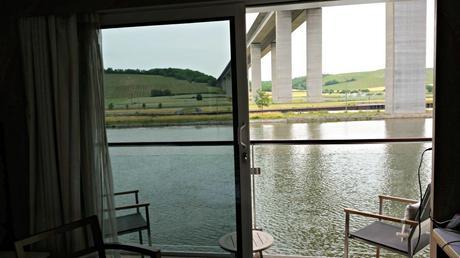
For €64 per person, Viking offered an optional tour that would take us through the heart of Franconia along the famous “Romantic Road” to the medieval city of Rothenburg ob der Tauber. In Rothenburg we would enjoy a morning walking tour, free time for shopping (or photography) and an included “traditional German lunch.” Finally we would return to Wurzburg to tour its Residenz.
Armed with umbrellas we all climbed on the bus at 8:30, eager to see what was in store. Dan confessed that, of all the sights in our 15-day trip this was probably the one that he most looked forward to. Rothenburg is a photographer’s dream.
We had the bus ride to look forward to as well. After all, we’d be riding along the Romantic Road.

What’s so romantic about a road?
The Romantic Road may have begun as a medieval trade route, but these days most of its travelers are tourists seeking “quintessentially German” scenery and culture. Think wrought-iron signs hanging out from quaint half-timbered houses, winding cobbled streets, and biergartens full of laughing Germans. The 350 kilometer route begins in Wurzburg and ends at Neuschwanstein Castle, near the Austrian border.
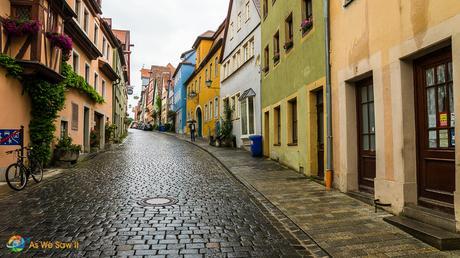
Rothenburg ob der Tauber
Our coach meandered along the winding route and we were all enchanted by the picturesque towns, vineyards and farmland along the way. (It’s such a shame that the raindrop splatters on our windows made photos impossible. We’d have liked to show how pretty it is.)
Finally our bus climbed the long hill from the banks of the Tauber River and parked. Everyone piled out and followed our guide along the town wall and through a gate, where we began our tour of the old town.
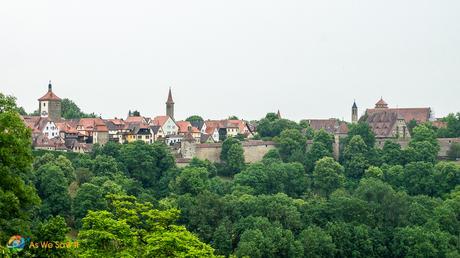
As you can see from this photo the city is still encircled by towered walls. Actually, Rothenburg is considered one of Germany’s best-preserved villages. Rothenburg because it emerged from both the Thirty Years’ War and WW2 relatively unscathed, miraculously. God must have been watching over it.
Rothenburg has its share of historic sites of course, but then most every old thing is historic if you think about it. Like most visitors Dan and I were far more interested in its ancient ambiance than in remembering names for all the sights. We were literally enchanted. This must be what Germany had looked like, once upon a time.
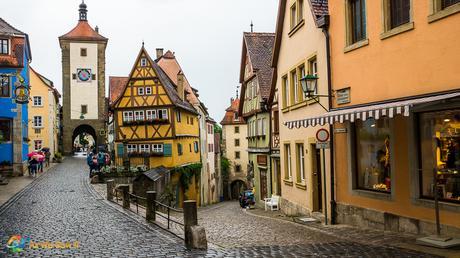
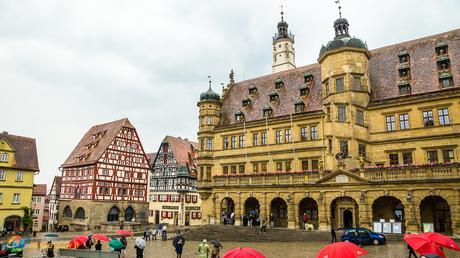
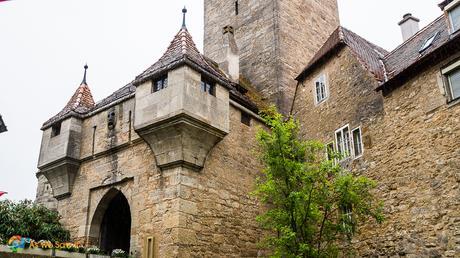
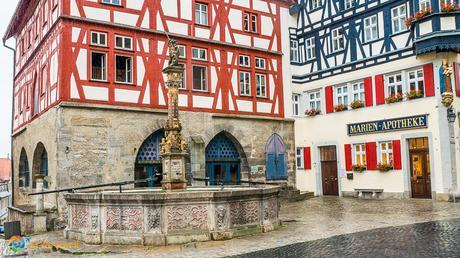
And then there’s the Schneeballs, which were in all the bakery windows. They are mainly made of flour, eggs, sugar, butter, cream, and plum schnapps. Schneeball is the German word for snowballs, and they sure look like it: strips of pastry rolled into a hand-sized ball and then frosted with various sugary glazes. They are very popular around Rothenburg. It’s a safe bet that you could take it home as a souvenir to share with friends … it lasts for two months without refrigeration!
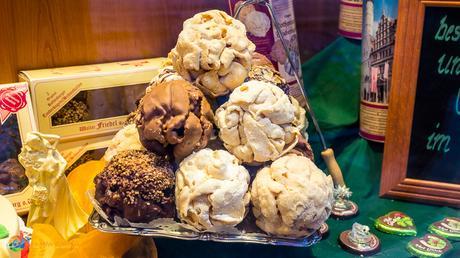
We had some free time between our tour and lunch time. As we headed off to walk the city walls for better views we passed by the well-known Kathe Wohlfahrt Christmas Shop where the staff actually police the store to make sure no one takes photos. Crazy, right? We hadn’t planned to go in anyway, but just because of that he took a picture of a life sized nutcracker standing next to the door. (Ha – they can’t do much about that!)
As you can see here, we got a unique perspective from atop the walls.

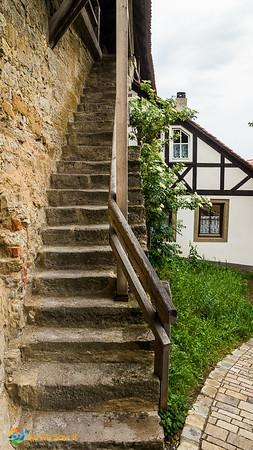
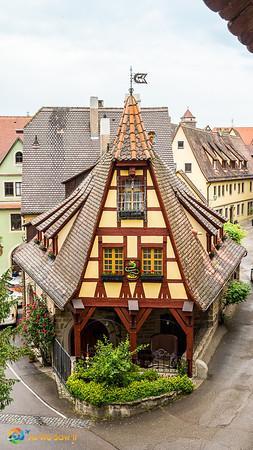
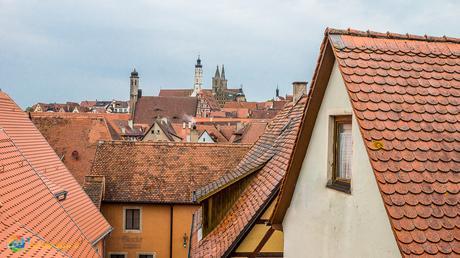
As I suspected, our “traditional German lunch” consisted of sausages and potatoes. Germans like their pork, that’s for sure, so if you follow a special diet you should ask what a dish contains before ordering. We don’t eat it (ew!), so Viking had arranged for us to receive an alternate meal instead. We really appreciated that.
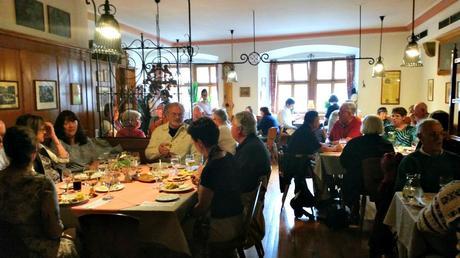
Würzburg Residenz
We enjoyed even more Romantic Road vistas on our way to our next destination, the Würzburg Residenz.

This ostentatious prince-bishop’s residence was built and sumptuously decorated in the 1700s. Its short, 35-year construction time gave it a homogeneous appearance (mostly baroque) and was one of the main reasons it earned UNESCO World Heritage Site status. In their words, “The Würzburg Residence [sic] is at once the most homogeneous and extraordinary of the Baroque palaces. … The structure is a joint achievement of the most significant European architects, sculptors, and painters of the 18th century from France (particularly Paris), Italy (particularly Venice), Austria (particularly Vienna), and Germany.”
Napoleon put it more simply: He called it the “nicest parsonage in Europe.”
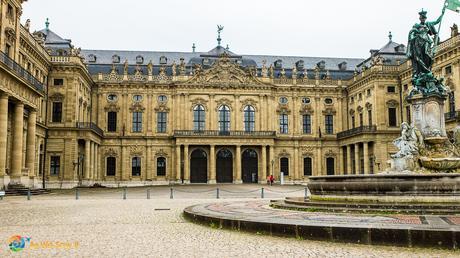
Despite the Allied fire bombs during WW2, the massive vaulted ceilings in the vestibule, staircase, and Imperial Hall – complete with their beautiful decorations – managed to survive. The rest of the Residenz was not so fortunate, however, and took over 40 years to restore.
Our guided tour was of the inside only. We were immediately impressed as we climbed the grand staircase and were greeted by a massive fresco depicting the four continents that were then known. Upon looking closer we noticed that it had 3-D features: legs sticking out from the fresco!
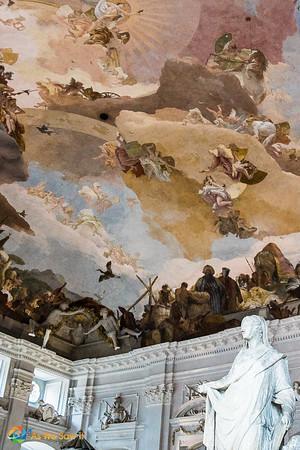
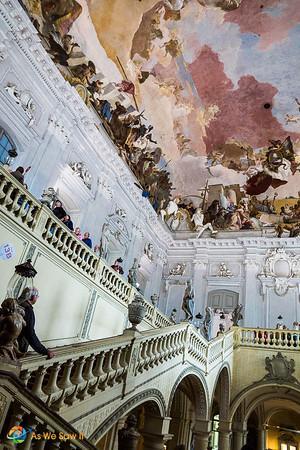

The White Hall is a breathtaking monochromatic gallery, mostly white and pale gray.
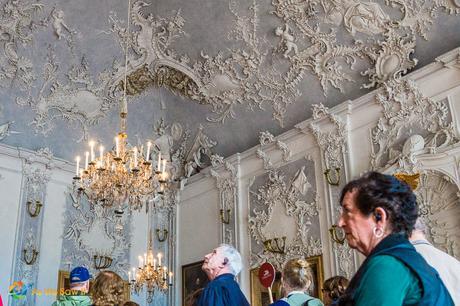
Another room was full of faux finishes including marble-effect columns and draperies made of plaster.
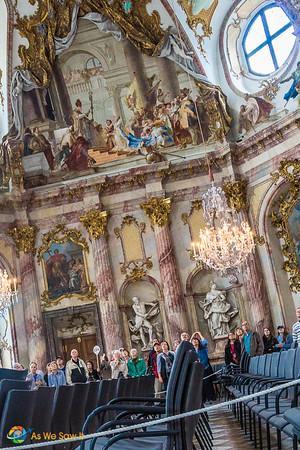
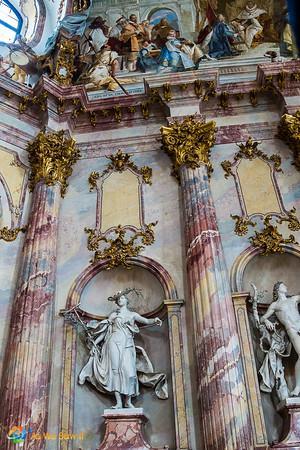
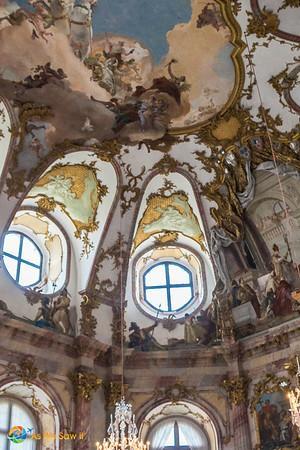
From there we walked into the Southern Imperial Apartments, which became more and more elaborate in decoration as we moved from room to room. The ultimate room was an intricately-ornamented room called the Mirror Cabinet, whose walls were entirely covered in painted glass panels. All the paintings and drawings show oriental scenes.
As you might expect, the Mirror Cabinet did not survive the War and took years to restore, but the final result is amazing.
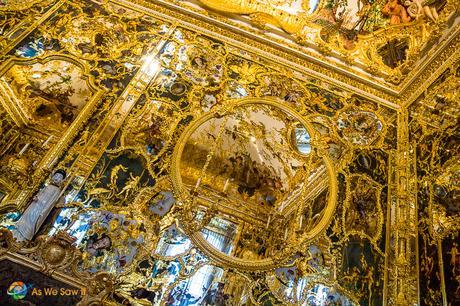
After our tour we had free time before heading back to the ship. We spent some time looking around the town (check out our Wurzburg gallery for the photos) and finally ended up bridging – a local tradition of enjoying a glass of wine and a fabulous view atop a Tauber bridge.
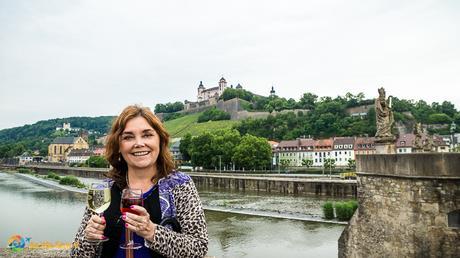
Glassblowing
To inspire us for tomorrow morning’s visit to Wertheim, a city famous for its glass, tonight’s entertainment was a fascinating glass blowing demonstration by a Wertheim resident named Hans Ittig, who comes from a family with 150 years of glass making experience. He had great stage presence and made us laugh a lot. It became even more fun when he invited our new English friend Fi (short for Fiona) to help him.
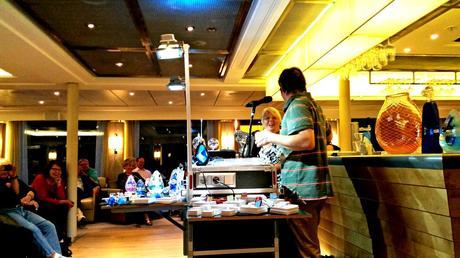
- Next stop: Wertheim
Want to see more photos from our day in Rothenburg and Wurzburg?
Enjoy them full-screen with our free Slideshow feature and pin your favorites.
- Click here to see more photos from our day in Rothenburg.
- Click here to see more photos from our day in Wurzburg.
PIN TO PINTEREST! Click the button in the top left of our images to save them to your Pinterest galleries.
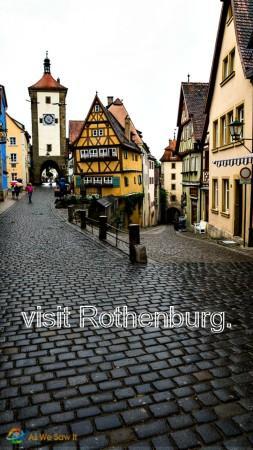
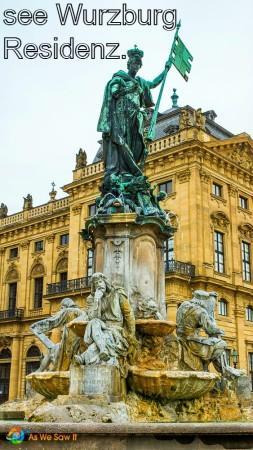
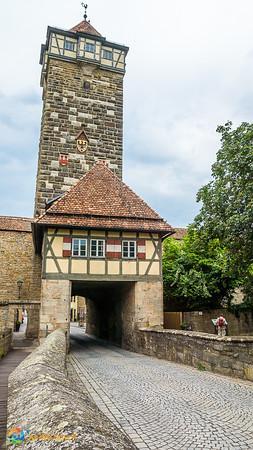
Read more …


Or just click here for the entire 15-day Viking Grand European tour itinerary. All of our cruise-related posts will end up on that page, so be sure to bookmark it!

